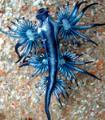DMT-Nexus member
Posts: 155 Joined: 12-Jan-2012 Last visit: 01-Jan-2014 Location: zone 9
|
Why did scientists choose to "look" for DMT in certain plants and not in others?
|
|
|
|
|

yes
Posts: 1808 Joined: 29-Jan-2010 Last visit: 05-May-2025 Location: in the universe
|
its the will of the plants  illusions !, there are no illusions
there is only that which is the truth
|
|
|
DMT-Nexus member
Posts: 29 Joined: 02-Dec-2012 Last visit: 11-Nov-2014 Location: Loland
|
Thats the Art of the balance  Shadow of the past living in the present that builds the future.
Your fear stops you seeing in the dark. When you've already chosen that you don't care - you cut through the dark.
|
|
|

DMT-Nexus member
Posts: 124 Joined: 07-Dec-2012 Last visit: 30-Dec-2014
|
Maybe they were inspired to do so, like the structure of the benzene molecule was discovered after an archetypical dream: Quote:"... the known experience of the chemist Friederich August von Kekulé. Lots of times it's been observed that the scientific and technological discover discovery often includes a metaforical thinking. In 1865, Kekulé had been trying, with little success, to discover the chemical structure of the benzene. The molecule consists in a ring of atoms, but then they didn't know the structures of the ring. Absort in the problem, Kekulé had a dream in which the molecules appeared like files of atoms. They gathered and swerved in such a way that they made Kekulé think of serpents. Suddenly, one of the serpents turned until biting its tail, and this suggested Kekulé the structure of the benzene ring." http://www.levity.com/alchemy/I-ourob.htmlIt's almost the same question as, why did Amazonians put certain plants in their brews, and not others? Either that, or scientists scan forums like this one to see which plants to analyze,,,
|
|
|

DMT-Nexus member
Posts: 376 Joined: 27-Jan-2011 Last visit: 24-Jul-2025
|
Makes sense. If they found out that indigenous people used mimosa hostilis root, psychotria viridis leaves, diplopterys etc., they would look into them, then their immediate families and relating geni. They may have speculated that many plants in S. America could potentially contain relevant substances. Then they could analyse the plants' phytochemistry to see what kind of substances exist on those plants that could produce DMT as a metabolite, and then track down other unrelated plants that have the same precursor substances to see if there's a link. And the list goes on...
What you don't understand, you can make mean anything. - Chuck P.
Disclaimer and clarification: This member has been having brief intermittent spells of inattention. It looks as if he is daydreaming in place. During those distracting moments, he automatically generates fictional content, and asks about it in this forum for feedback. He has a lot of questions, and is a pain in the arse.
|
|
|

DMT-Nexus member

Posts: 1711 Joined: 03-Oct-2011 Last visit: 20-Apr-2021
|
Ideally, I guess that if we completely understood the biosynthesis of the compound we would narrow down more easily any list of botanical candidates and then trial/error would be acceptable. But so far, it's observation. You notice someone using something and then you look into it and do some research, and as The Neural said, if there is available knowledge of the botanical family, you might research related species. The thing is, this observation rule might apply to indigenous cultures where they observe nature, but not necessarily other people, and become interested in a plant or fungus (say, like ancients in Siberia noticing a reindeer eating fly agaric mushrooms)... but is every psychoactive plant consumed by humans a treat for other animal species? Not at all, apparently. If we try to go to the source, I don't think trial/error sustains as the sole explanation. There must have been insights, such as Hofmann's with LSD, and maybe they came when a non-plant induced visionary state drew a man's attention to a bush in particular. "The Menu is Not The Meal." - Alan Watts
|
|
|
member for the trees
  
Posts: 4003 Joined: 28-Jun-2011 Last visit: 27-May-2024
|
..it's also just 'random'..
e.g. with australian Acacias about 40-100 have been randomly formally selected and tested (and plenty had DMT) but the remaining 8-900 simply haven't been studied..
the same could be be said of all the worlds' plants..public funded institutions never have much money, let alone bosses who want them to find DMT!
|
|
|

Dreamoar

Posts: 4711 Joined: 10-Sep-2009 Last visit: 06-Nov-2025 Location: Rocky mountain high
|
This is a rich area of study indeed for all you aspiring ethnobotanists.
|
|
|

DMT-Nexus member
Posts: 3207 Joined: 19-Jul-2011 Last visit: 02-Jan-2023
|
dreamer042 wrote:This is a rich area of study indeed for all you aspiring ethnobotanists. wow.. too bad you have to go to school for that My wind instrument is the bong
CHANGA IN THE BONGA!
樹
|
|
|

Kalt und Heiß, Schwarz und Rot, Kürper und Geist, Liebe und Chaos
 
Posts: 4661 Joined: 02-Jun-2008 Last visit: 30-Apr-2022
|
nen888 wrote:..it's also just 'random'..
e.g. with australian Acacias about 40-100 have been randomly formally selected and tested (and plenty had DMT) but the remaining 8-900 simply haven't been studied..
the same could be be said of all the worlds' plants..public funded institutions never have much money, let alone bosses who want them to find DMT! yes... random is the answer here. Scientists usually do not choose to look for dmt (or any other molecule of interest) in plants. They just extract plants, partition their compounds and analyse what they got out of it. Need to calculate between salts and freebases? Click here! Need to calculate freebase or salt percentage at a given pH? Click here!
|